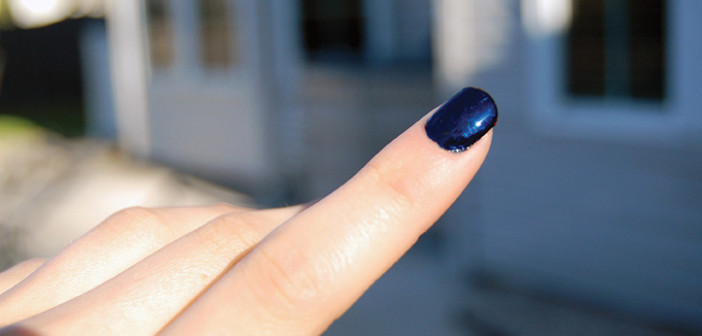Haylie Berkland
Contributing Writer
Undercover Colors is the up and coming nail polish that is aiming to give women protection against date rape and help prevent its occurrence.
When wearing this nail polish, the user simply needs to dip a finger in her drink, and the polish will change colors if it detects the date rape drugs Rohypnol, Xanax, or GHB.
Created by four male Materials Science and Engineering students at North Carolina State University, the company’s Facebook page says that their goal is to “invent technologies that empower women to protect themselves from this heinous and quietly pervasive crime.”
Protection against sexual assaults is especially important on college campuses. According to the Centers for Disease Control and Prevention, 1 in 5 women and 1 in 71 men experience rape at some point. Overall, one third of these crimes occur to college females.
A quick glance at the North Central Annual Crime Statistics will show that over the last three years, there have been increases in reports of stalking and forcible sex offenses. However, Cynthia Washburn, Violence Education and Prevention Coordinator at North Central, assures students that these numbers are not necessarily representative of an increase in the occurrence of these crimes.
“That number [of increased sexual offenses]doesn’t indicate that crimes are occurring more often, it indicates that people are coming forward to report a crime [more often].” Washburn explains.
As a counselor, Washburn stresses the importance of reporting sexual assaults. “When people are reporting, they’re getting support, they’re getting help that they need, or they’re getting outcomes that they want,” Washburn urges. “The offender can be held accountable, and ultimately the goal is to prevent them from offending against someone else.”
With this, it is possible that Undercover Colors and other such preventative products and programs might not only help in preventing sexual assaults, but also in encouraging women to report these crimes and seek help. Green Dot bystander intervention is one such program that has been launched at North Central, which Washburn explains does show a 50% decrease in violence perpetration over time.
While Undercover Colors is still in its developmental stages and there is little information available about it, several people view it as a product that merely places the burden on women to protect themselves against sexual assault, rather than actually addressing the issues of these crimes. However, Marc Molina, assistant director of campus safety, sees the potential benefits of this type of product.
Molina says that “there are a lot of other things that can be done as well,” but that Undercover Colors could be “another tool” that could help prevent sexual assault. Overall, Molina explains that “all of these tools are part of the solution to a complex puzzle.”
Washburn seconds this sentiment, saying that “fair or unfair, women have the burden placed on them when they’re young.” She goes on to state that “The perception that it’s placing additional burden on us is there, but it’s no different than checking in with your friend,” and that “regardless of what a person does or doesn’t do, they never deserve to be the victim of sexual assault.”
North Central junior Rachel Pierson’s take on this product is that, “it would be strange to have to stick your finger in every drink you consume, but it’s interesting.” Pierson explains that this product is unique and a good way for women to take matters into their own hands.
However, Washburn does warn that, “there is no prevention that is one-size-fits-all.”
Ultimately, Molina explains that “there is always a need for everyone, women and men, to be cognizant of their situation and be aware, and take responsibility for themselves.” Further, Molina says that education for all parties involved is the key to prevention.
Washburn praises North Central’s efforts to increase education and awareness of these crimes, and says that “having a community that simply does not tolerate sexual assault” is another important factor that will help prevent it.
Thus, prevention of sexual assaults can be achieved in part through taking advantage of all of the available tools, but also by understanding the root of the problem and educating ourselves to create safe environments.

